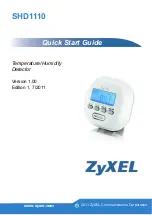
1.2 Reference Documentation
CX11252 HSF Modem, Host-Processed V.92/V.90/K56flex Modem Device
Family for PCI-Bus Desktop and Mobile Applications Data Sheet
2 Syntax and Procedures
The command and response syntax and procedures generally conform to referenced
recommendations and standards. Since these recommendations and standards describe
characteristics universal to a large installed base of modems to a maximum degree, there may
be syntax and procedural differences due to extensions and behavioral differences in
implemented commands, parameters, and responses beyond that described in these
recommendations and standards.
The syntax and procedures described in this section are based on V.250 and V.253 with
additional information included for implemented extensions, behavioral differences beyond
V.250, and legacy commands.
2.1 Alphabet
The T.50 International Alphabet 5 (IA5) is used in this document. Only the low-order seven
bits of each character are significant to the modem; any eighth or higher-order bit(s), if
present, are ignored for the purpose of identifying commands and parameters. Lower-case
characters are considered identical to their upper-case equivalents when received by the
modem from the DTE. Result codes from the modem are in upper case.
2.2 DTE Commands Lines
Words enclosed in <angle brackets> are references to syntactical elements. The brackets are
not used when the words appear in a command line, the brackets are not used. Words
enclosed in [square brackets] represent optional items which may be omitted from the
command line at the specified point. The square brackets are not used when the words appear
in the command line. Other characters that appear in syntax descriptions must as included as shown.
Any modem responses are mentioned in terms of their alphabetic format; the actual response
issued will depend on the setting of parameters that affect response formats, e.g., Q and V
commands (see 2.7).
2.2.1 Command Line General Format
A command line is made up of three elements: the prefix, the body, and the termination character.
The command line prefix consists of the characters "AT" or "at" or, to repeat the execution of
the previous command line, the characters "A/" or "a/".
The body is made up of individual commands described in this document. Space characters
(IA5 2/0) are ignored and may be used freely for formatting purposes, unless they are
embedded in numeric or string constants. The termination character may not appear in the
body. The modem can accept at least 40 characters in the body.
The termination character may be selected by a user option (parameter S3), the default being CR.
2.2.2 Command Line Editing
The character defined by parameter S5 (default, BS) is interpreted as a request from the DTE
to the modem to delete the previous character. Any control characters (IA5 0/0 through 1/15,
inclusive) that remain in the command line after receipt of the termination character are
ignored by the modem.
The modem checks characters from the DTE first to see if they match the termination
character (S3), then the editing character (S5), before checking for other characters. This
ensures that these characters will be properly recognized even if they are set to values that the
modem uses for other purposes. If S3 and S5 are set to the same value, a matching character
will be treated as matching S3 (S3 is checked before S5).
Содержание Tornado 562 S II
Страница 1: ...Tornado 562 S II User Manual...
















































